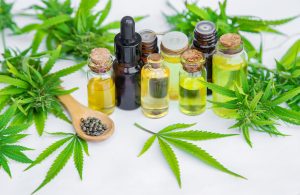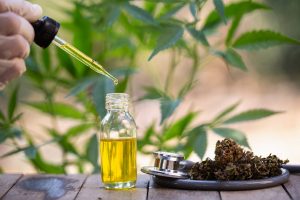Athletes are in constant pursuit of better performance and faster recovery. In recent years, a new player has entered the field of athletic enhancement — Cannabidiol, better known as CBD. Its rising popularity within the sports community lies in the potential to improve and accelerate recovery, alleviate pain, and manage stress and anxiety, all without the psychoactive effects typically associated with cannabis.
The Science Behind CBD and Performance
Does cbd help athletic performance? CBD is one of over a hundred phytocannabinoids found in the cannabis plant. Unlike its more infamous cousin, THC, CBD is not psychoactive. Instead, it is associated with several potential therapeutic effects that may be beneficial for athletes. Research suggests that CBD can interact with the body’s own endocannabinoid system, which plays a role in functions like sleep, appetite, pain, and immune response.

A Balancing Act for the Body
The endocannabinoid system has receptors throughout the body and contributes to the homeostasis, or internal balance, of many critical systems. For athletes, this means CBD could potentially help regulate sleep, reduce inflammatory response in muscles, or even enhance the growth of new brain cells associated with memory and learning.
Managing Inflammation and Pain
Inflammation is the body’s natural response to injury or intense physical activity. While beneficial in the short term, excessive or chronic inflammation can hinder recovery and performance. Cannabidiol may alleviate pain and reduce inflammation through various mechanisms, making it an attractive option for athletes looking to manage discomfort without the side effects of common nonsteroidal anti-inflammatory drugs (NSAIDs).
Anecdotally and Through Research
Surprisingly, the evidence on CBD for sports recovery is relatively nascent, but early studies and a slew of athlete testimonials suggest that CBD products, from creams to tinctures, are catching on in locker rooms and on the playing fields of professional sports across the globe.
Case Studies and Athlete Testimonials
What really turns heads, however, are the personal stories of athletes who have turned to CBD and noticed tangible improvements. From MMA fighters praising CBD for its role in combatting the rigors of training, to marathon runners crediting it with helping to manage aches and pains, the anecdotal evidence is compelling.
Players’ Perspectives
In a survey of over 150 professional athletes, nearly half stated they believed CBD could reduce their reliance on more dangerous medications used to manage pain. These players’ experiences paint a picture of CBD as a potential game-changer for the athletic community.
Diving Deep with Data
While case studies and personal accounts are powerful, they are not enough for the rigorous standards of scientific proof. More in-depth, large-scale studies are crucial to understanding the broad applicability and efficacy of CBD in sports.
Addressing Misconceptions and the Legal Landscape
Despite its rise in popularity, CBD use in sports isn’t without controversy. There are still significant misunderstandings and misconceptions surrounding the compound, from its association with illegal drugs to the nebulous regulatory environment that surrounds it.
The Big “WADA” Wariness
The World Anti-Doping Agency (WADA) notably removed CBD from its list of banned substances in 2018, but this change has yet to ripple through all levels of sports and athletic associations. Some sports continue to enforce their own rules, often stricter than WADA’s, leaving many athletes unsure about the consequences of CBD use.
Separating Fact from Fiction
A common misconception is that all CBD is created equal, or that it will produce the same effects as THC. Understanding the differences between various CBD products, the quality of the CBD source, and the presence of other compounds are crucial to safe and effective use.
How to Safely Incorporate CBD Into Your Fitness Regimen
For those intrigued by the potential of CBD but unsure where to start, several best practices can mitigate the uncertainty and provide clarity on how to incorporate CBD into one’s training and recovery routines.

Finding the Right Product
The market is flooded with CBD products, so selecting a trustworthy brand is the first step. Look for companies that provide third-party testing and are transparent about the sourcing and potency of their CBD.
Dosing and Delivery
Determining the right dosage is a highly individual process and can depend on factors such as body weight, the severity of the pain or inflammation, or the desired effects. CBD is available in various forms, from tinctures for oral use to creams for topical application, with each method affecting the body differently.
Tracking Progress
Like any supplement, the key to using CBD effectively is understanding its impact on your body. Keeping a training log or journal can help identify patterns and optimize dosage and timing for the most potent results.
The Future of CBD in Athletics
The conversation surrounding CBD and sports is only just beginning. Research is ongoing, and as the legal landscape evolves, we can expect to learn more about the benefits of CBD for athletes.
The Research Continues
Current studies may pave the way for greater acceptance and utilization of CBD in sports, potentially leading to products and application methods specifically designed for athletes’ unique needs.
The Legal and Medical Lens
The increasing understanding of CBD’s effects, combined with the relaxing of its stigma and legal constraints in many areas, may lead to clearer legislation and guidance on its use in sports.
A Potential Game-Changer
For now, CBD remains an exciting piece of the puzzle for athletes looking to train harder, recover faster, and compete better. With careful consideration and the right approach, it could be the natural solution many have been searching for.
How do you use a CBD vape pen? The use of CBD vape pens has gained traction thanks to their rapid onset of action and high bioavailability. Here’s a brief guide to using these devices safely and effectively in your training and recovery plan.
Safety First
Choose a high-quality vape pen from a reputable brand and always follow the device’s instructions for usage and storage. Keep your CBD vape products away from extreme temperatures and direct sunlight to preserve their integrity.
The Right Technique
When using a CBD vape pen, remember to inhale the vapour slowly and steadily to ensure proper absorption by the lungs. Start with a low dose and gradually increase as needed, paying close attention to your body’s response.
Warning Signs to Watch For
While rare, side effects from vaping CBD can occur. If you experience any negative symptoms, such as dizziness or a rapid heart rate, cease use and consult a medical professional.
